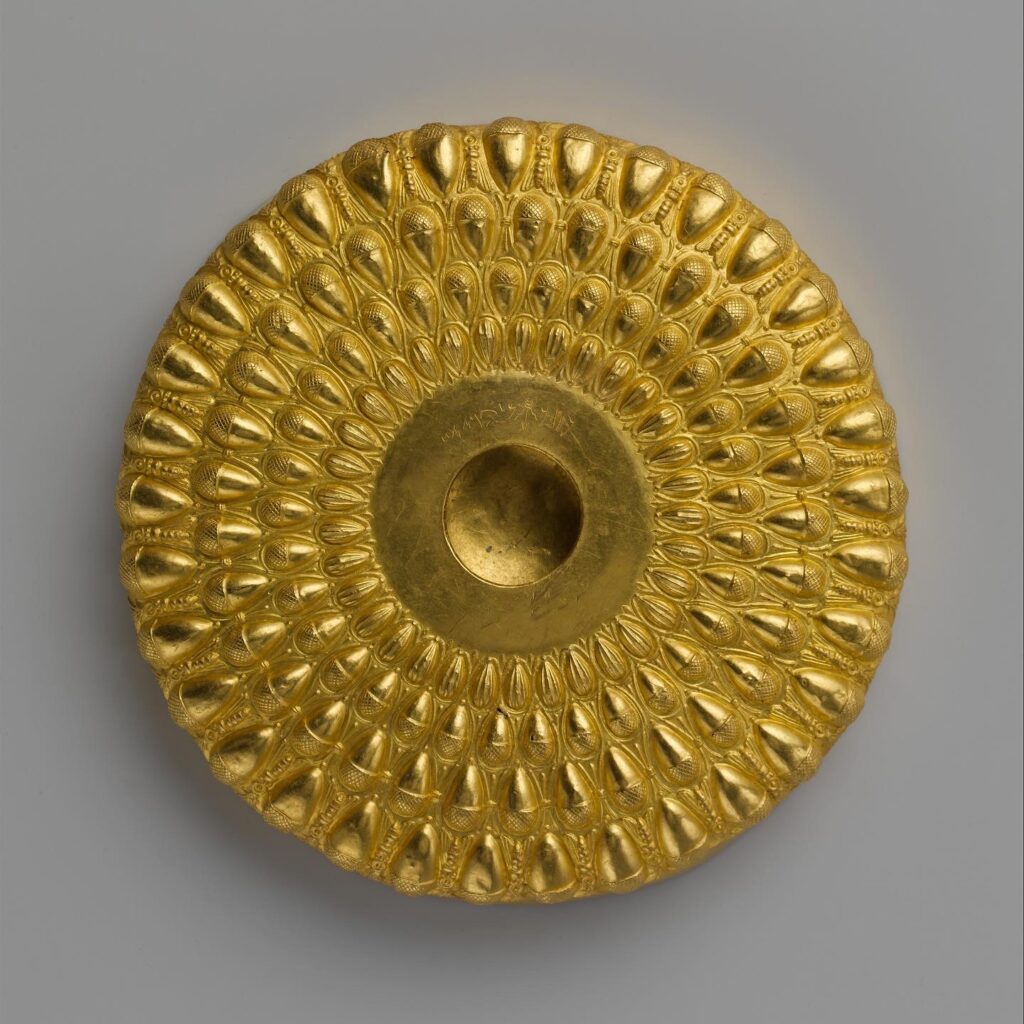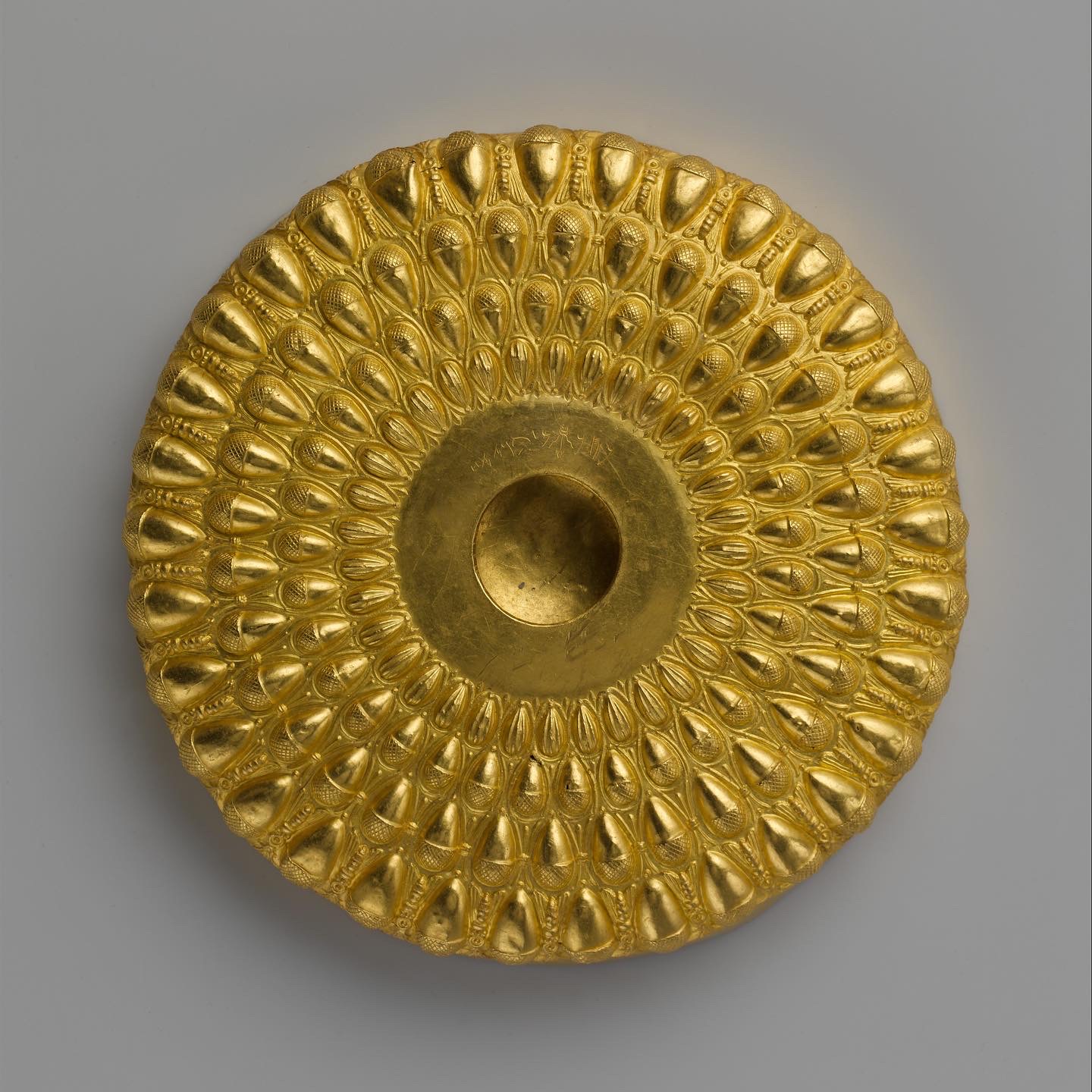After weeks of relentless gray rain, it seemed appropriate to start off this Monday with a stunner of a vessel as radiant and round as the sun.
This is the exterior of an omphalos phiale (omphalos being Greek for belly-button / navel), named for that central circular indentation poking up into the vase’s interior. The decorative motif surrounding that belly-button, all rendered in repoussé, begins with a slim circle of beechnuts and progresses with swirling rows upon rows of elegantly rendered acorns…all the way to the rim where they alternate with bees.


Phialai were shallow vessels, with that central navel an aid in grasping it and pouring librations from it, and are known from lesser materials (even with this motif) for centuries. But the splash amount of gold used (it’s nearly 30 cm in diameter and heavy) seems to place this example’s manufacture squarely in the Hellenistic period, where such vessels might have been commissioned by local kings and dedicated at sanctuaries.
Given the profusion of acorns here, one can’t help think of the mighty oak, sacred to Zeus, and his sanctuary of Dodona where the whispering of the sacred oak trees might have had an oracular function. And if one stretches one’s imagination, one wonders if Pyrrhus of Epirus (who made a very fancy renovation to the Temple of Zeus and surroundings at there in the early 3rd century B.C.) might have been behind this very vessel, depositing it in a treasury in his newly refurbished sanctuary.
Scratched onto base, is a scribbly little Punic inscription, denoting the vessel’s considerable weight. It is not clear how or why the phiale came into the hands of the Carthaginians, but it did likely as war booty (open to other suggestions!). Given Dodona’s location and the nasty time both Pyrrhus and Hannibal gave the Romans in the 3rd century, it’s fun to speculate…
Happily (and surprisingly) it was not melted down for repurposing, and remains ripe for contemplation at the Met.




